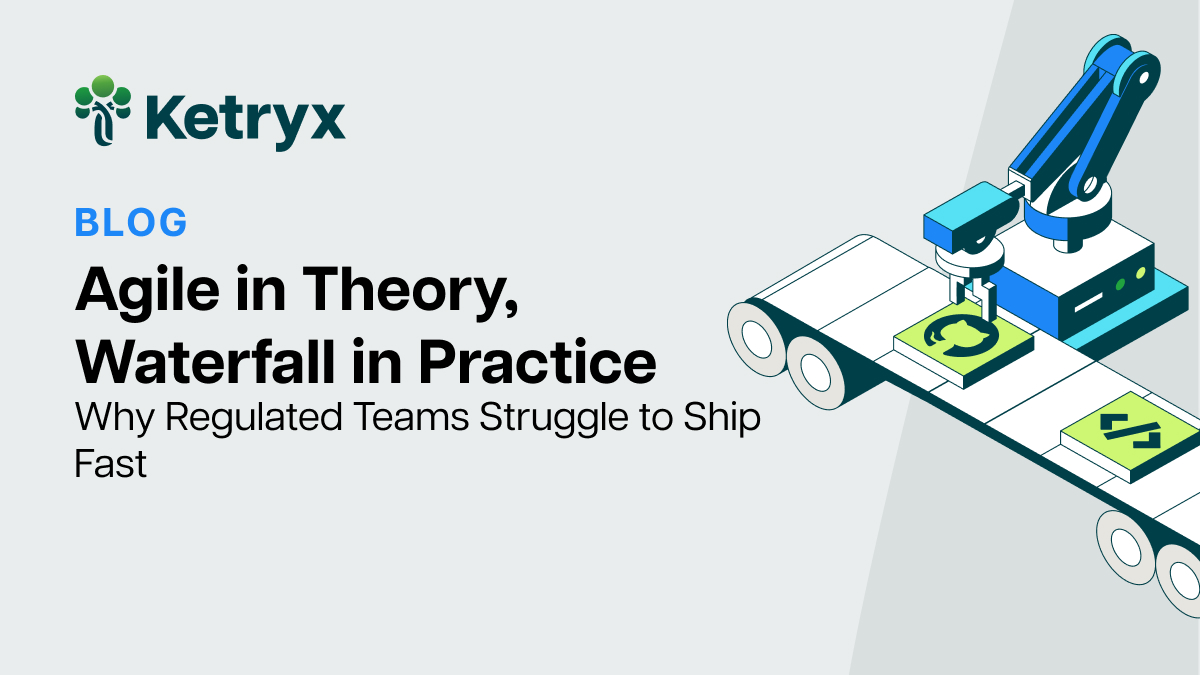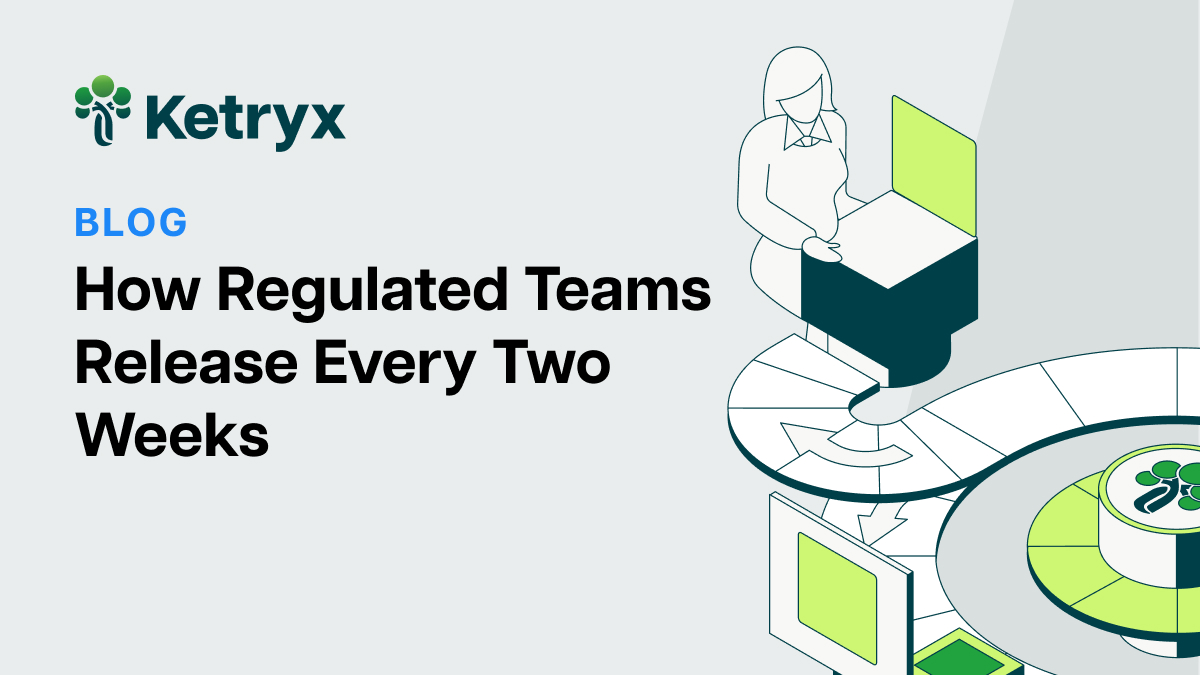
How MedTechs Can Retain Developers
Table of Contents
Medical device software development is a dream job that combines innovation with purpose for many developers. But what happens when that dream gets bogged down by compliance inefficiencies and legacy tools that make developers feel like they can’t do great work and live up to their full potential?
While the MedTech industry offers developers the opportunity to work on life-changing technologies, outdated tools and slow development cycles pose significant challenges that can turn passion into frustration — and even burnout. To retain top technical talent and succeed in today’s market, MedTech companies must take steps that empower developers to focus on high-impact, patient-centered work.
The current developer experience in MedTech
Developers who decide to work in the medical field often do so because they care deeply about helping patients and improving people’s lives. Additionally, the industry offers opportunities to work on cutting-edge technologies involving AI and machine learning that are driving incredible innovation.
However, developers struggle with the overhead and rigidity of required documentation processes. Tedious copying and pasting, manual approval workflows, and lack of flexibility can be stifling — after all, developers value being able to work iteratively and receive rapid feedback within their preferred tools. The waterfall-based software development approach used in many MedTech companies, further slowed by documentation and legacy tooling, can make developers feel like they have stepped into a time machine to build software in the 1990s.
As a result, many developers end up feeling like they're just doing "busy work" rather than focusing on strategic, high-impact tasks. If not addressed, this can lead to burnout and retention issues. Unfortunately, it’s not unusual for medical device software companies to see developer turnover rates around 20%, whereas successful tech companies outside the medical space (e.g., Uber) often see annual attrition rates at 10% or less.
Reasons why developers leave the medical device industry
Intense job demands and outmoded work methods frequently cause MedTech developers to burn out and leave to work at unregulated software companies. Here are some of the top reasons why developers struggle in the medical device industry.
Complex compliance requirements
FDA-regulated environments require strict adherence to compliance and meticulous documentation at each stage of the software development lifecycle, which can be tedious and time-consuming for developers. Developers must ensure that all code changes, design decisions, testing, and risk assessments are fully documented, traceable, and meet strict standards like IEC 62304.
"Busy work like documentation is something developers really dislike. So I think, as a developer, you often look at all of this work that's being done manually and wonder why it's not automated like other important DevOps processes.” – Thomas Leberbauer, Senior Software Engineer at Ketryx
Compliance documentation is a good thing in theory, as it proves that software is safe, effective, and reliable. However, because most companies still have highly manual documentation practices (e.g., copying and pasting information between spreadsheets) developers view these monotonous tasks as burdensome and taking time away from coding and product innovation. Many MedTech companies report that document generation can take months after the code is complete, which can slow the release process further.
The waterfall development model
New-to-MedTech developers who are accustomed to agile DevOps inevitably feel frustrated when they must revert to old-school, waterfall methodologies to build regulated medical device software. Waterfall’s rigid, sequential approach involves extensive upfront work and fixed requirements, limiting developers’ ability to experiment with new features and respond to the business’s evolving needs.
For example, imagine a development team building a mobile application for diabetes management. During the early design phase, they define precise requirements for how the software will process glucose readings and make recommendations. After months of development, they learn that data scientists have built a more effective algorithm for managing glucose spikes — something not considered in the original requirements.
In a waterfall model, incorporating this new algorithm would require going back to the initial design, updating the requirements, manually updating all documentation, going through the change control process, and redoing significant portions of development and testing. This is costly, time-consuming, and risks delaying the product launch. With an agile approach, the team could have used iterative sprints to adapt to changing requirements quickly, test new algorithms early, and deliver incremental improvements without disrupting the entire project timeline.
Ultimately, developers want critical activities (testing, risk management, cybersecurity, etc.) to “shift left” so they happen earlier in the software development lifecycle (SDLC), ensuring they can catch and fix small issues before they become much more difficult to address.
Slow feedback loops
Slow feedback cycles (another byproduct of traditional, waterfall methodologies) are a major annoyance for MedTech developers. In unregulated software development environments, developers rely on rapid feedback from a variety of sources (via continuous integration/deployment, testing, user feedback, etc.) to quickly iterate and improve their work. However, in regulated environments, each code change or feature update must go through multiple layers of validation, risk assessment, and formal approval before it can be tested or deployed.
These multiple layers of approval add significant delays between when a developer writes code and when they receive feedback on how their code performed and the user experience, as even small changes require updates to compliance documentation and re-validation. Such extended feedback loops are frustrating for developers who are used to working in a more agile manner. Consider what a standard bug fix would look like in an unregulated environment:
- The developer identifies the bug, makes the fix, and commits the code to a repository like Git.
- The change triggers an automated build and unit tests through a CI/CD pipeline.
- Within a few minutes, the developer gets feedback on whether the fix worked and passed all tests.
- If successful, the code is deployed to a staging environment for further review or testing.

But in a regulated medical device software environment, this process might look like:
- The developer identifies and fixes the bug, then has to assemble detailed documentation explaining the change and linking it to specific design requirements, risk assessments, and testing plans.
- The fix undergoes formal code review for technical accuracy and compliance with FDA guidelines (e.g., ensuring the change doesn't introduce new risks).
- After approval, the updated code is run through a validation process, where specific compliance tests are performed in addition to regular unit tests.
- The documentation is updated to reflect that the fix has been validated and must be reviewed and signed off by multiple stakeholders.
- Once compliance approval is granted, the software can be deployed to a controlled environment for testing.
Feedback loops in regulated environments can take hours compared to minutes in unregulated environments. These extended cycles frustrate developers, as they disrupt software iteration, reduce agility, and create a sense of stagnation, all while reducing the speed of R&D and issue resolution.
Lack of modern tools
In the highly regulated MedTech industry, widespread use of legacy enterprise tools (e.g., PLMs and first-generation ALMs) can be a major source of friction for developers. That’s because devs are accustomed to using modern tools like Jira and GitHub that are designed for collaboration, real-time updates, and seamless integration with other best-of-breed tools. Developers specifically dislike working in standalone legacy systems because these tools suffer from:
- Minimal flexibility and customization: Legacy tools are typically rigid and difficult to customize or integrate with other systems. Developers prefer tools that allow them to streamline their workflows and automate repetitive tasks.
- An outdated user experience: Many legacy tools have clunky, unintuitive user interfaces that feel outdated compared to the sleek, modern tools software developers are used to using in their professional careers.
- Compatibility issues: Older legacy tools may not play nice with newer technologies and programming languages, forcing developers to cobble together workarounds to these compatibility problems.
- Career development concerns: Developers are often worried that spending too much time working with niche legacy tools will limit their future career prospects, as the skills may not be as transferable.
- A lack of autonomy: Developers value the freedom to choose the right tool for the job. That might mean continuing to use Jira — the majority of devs who come from other industries want to continue using the best-of-breed tools they know and love — or incorporating third-party and open-source libraries as they see fit.
The consequences of developer attrition
Developers are likely to leave a company if they aren’t satisfied with their day-to-day work. As mentioned previously, medical device software companies can see developer turnover in the range of 15-20% annually compared to 10% or less for unregulated industries.
Some of the most harmful consequences of developer attrition include:
- Financial impact: Costs related to recruiting, onboarding, and training someone to fill a vacant role add up, which is why the cost to replace a technical role such as developer is estimated to be 80% of their salary all the way up to 200% for management roles.
- Loss of institutional knowledge: Medical device software development requires expertise in both software engineering and regulatory compliance. When a developer leaves, they take valuable institutional knowledge about the product, codebase, and specific regulatory processes with them. As a result, it takes longer to train a new employee to reach a similar level of product development and compliance proficiency.
- Project delays: Developing medical devices involves long, detailed processes, from design and coding to validation and regulatory approval. When a developer leaves, replacing them can take a long time, slowing down critical development milestones and delaying product releases, which can hurt a company’s market position. In fact, BlueOptima’s global benchmark survey found that it takes a company eight months on average to fully replace a departed developer.
- Increased compliance risk: New developers require time to familiarize themselves with complex compliance standards such as IEC 62304. In the absence of automated developer guardrails, a gap in understanding or mistakes during the transition can increase compliance risks, resulting in costly audits, regulatory penalties, or even product recalls.
- Morale loss and further attrition: When developers leave, it takes a toll on others on their teams, who have to pick up extra work, and employees in other departments, who may be disheartened or discouraged by the loss of technical talent. Considering one in two U.S. employees is currently open to leaving their current organizations, it’s possible that developer turnover will lead to further attrition.
As you can see, developer attrition has a cascading effect that can lead to project delays, financial losses, and increased risk. Addressing the root causes of dissatisfaction is crucial to retaining talent and maintaining a competitive edge.
Tips for improving developer satisfaction
Even if stakeholders don’t believe developer churn is a major issue, the cost of inaction is too high. Here are some of the essential steps MedTech companies should take to make developers happier and more productive while reducing turnover.
Provide modern, developer-friendly tools
Perhaps the most important change you can make to improve retention is to upgrade your tech stack so developers can work in their preferred tools without having to jump back and forth between multiple systems. According to McKinsey, choosing the right tools is paramount for development velocity, which is the ability to achieve transformative business value through software development. However, many MedTech companies introduce new platforms and unfamiliar solutions to developers and expect them to completely overhaul their workflows.
Instead, companies should adopt tools that meet developers where they are. An ideal developer-first compliance solution like Ketryx integrates seamlessly with the platforms engineering teams already rely upon, such as Jira, GitHub, GitLab, and Azure DevOps. This gives developers the autonomy to choose the tools they work in on a daily basis. Serving as a lightweight layer that sits atop developers’ favorite tools, Ketryx makes their lives easier in two key ways:
- Automated documentation that connects your existing QMS and dev tools to generate Part 11-compliant audit trails. This eliminates error-prone copying and pasting from previously siloed systems and can reduce documentation cycles from months to days.
- Engineering controls (aka automated developer guardrails) that automatically enforce your procedures and ensure the right steps are taken in the right order. This is crucial, as companies with large development teams working concurrently on many different features across many different product versions are often massively slowed down by manual enforcement of QMS procedures (which also introduces unnecessary risk).
Foresight Diagnostics used Ketryx to generate accurate, comprehensive documentation while reducing the time teams spend on these tasks by 80%. See how they did it.

Streamline compliance processes
Another critical action you should take to avoid losing developers to other industries is to minimize the burden of compliance on their daily work. To modernize your compliance strategy, you must simplify and automate as much of the documentation and regulatory compliance process as possible to reduce developers’ administrative workload.
Additionally, you should take advantage of the latest FDA guidance for simplifying compliance, such as recognized consensus standards that streamline premarket reviews, predetermined change control plan (PCCP) guidance for AI/ML products, and guidance for multifunction devices.
Keep a finger on the pulse of developer sentiment
It’s important to have regular check-ins with your developers to gauge their satisfaction and identify areas for improvement. For instance, this could take the form of a quarterly meeting with HR or a monthly survey that devs can fill out anonymously. This simple step is surprisingly overlooked by many: according to Gallup, nearly half (45%) of voluntary job leavers report that neither a manager nor another leader proactively discussed their job satisfaction, performance, or future with the organization with them in the three months before leaving.
Additionally, make sure your business is regularly measuring developer turnover rates to compare to industry averages and determine if attrition is going up or down on a monthly, quarterly, and yearly basis.
Act now to retain your technical talent
Satisfied, long-tenured developers are one of the best ways to excel in the market and maintain a competitive edge. To keep developers engaged and productive in regulated environments, MedTech companies must prioritize reducing the burden of compliance while allowing engineers to focus on innovation within their preferred systems.
Ketryx offers a developer-friendly solution that seamlessly integrates with developers’ favorite tools like Jira and GitHub to automate key compliance processes and accelerate development without sacrificing quality or safety. With our connected lifecycle management platform, MedTech companies can transform the developer experience, allowing teams to work more efficiently, reduce burnout, and deliver cutting-edge healthcare solutions faster.
Download our Validated DevOps guide to learn more about how to harmonize modern software development best practices with MedTech regulatory requirements.

Jan led cloud development for Wolfram Research, where he and Erez worked together to launch developer tools used by millions of users each day (Wolfram|Alpha, Mathematica). He has over 15 years of experience as a software developer and infrastructure architect and for the last decade has been leading the development of the Wolfram Cloud, a developer-first infrastructure cloud technology stack. Prior to Wolfram, Jan was a visiting researcher at the Stanford Biomedical Informatics lab. He holds a Master of Science degree in Mathematical Computer Science from Graz University of Technology.



